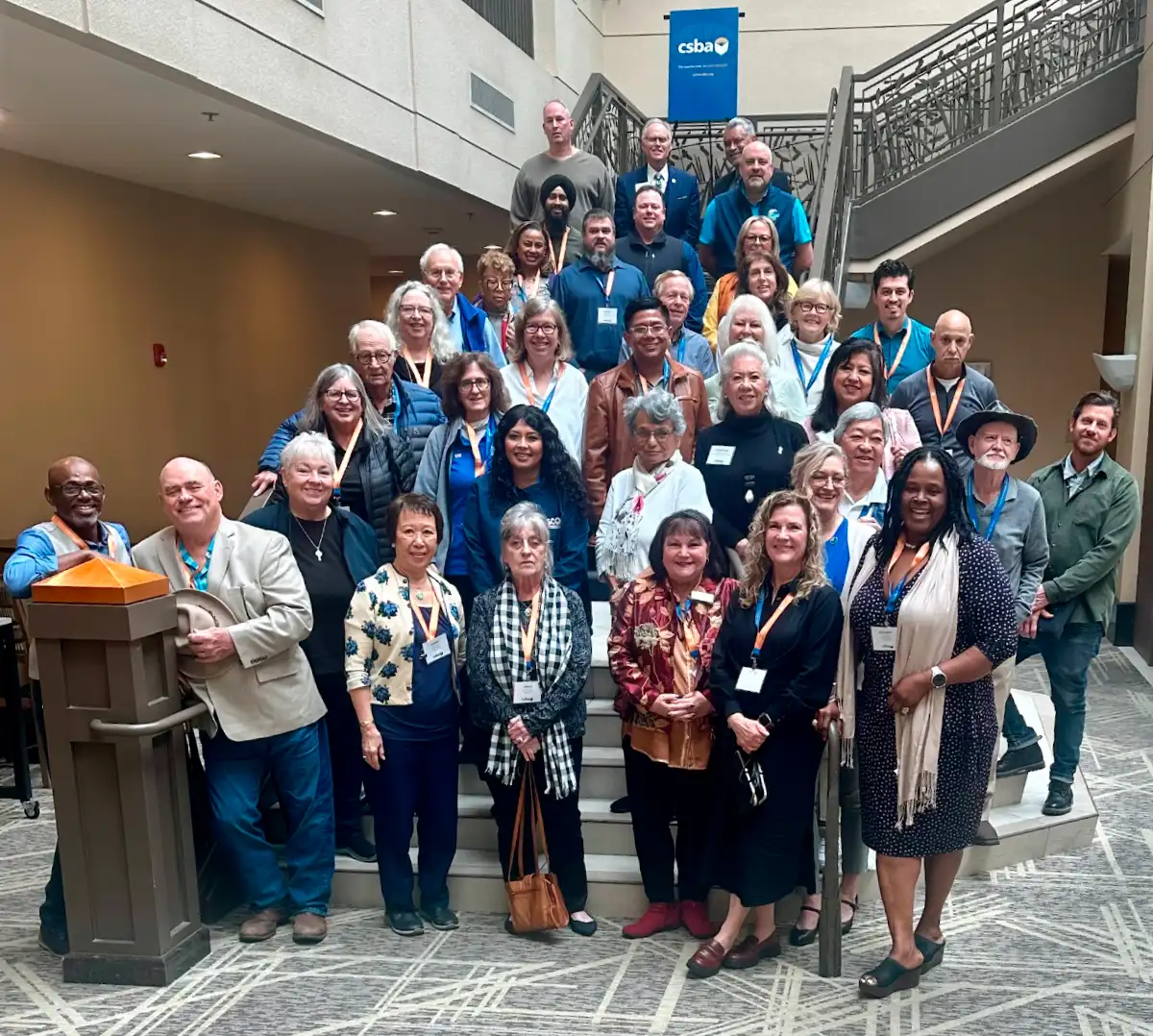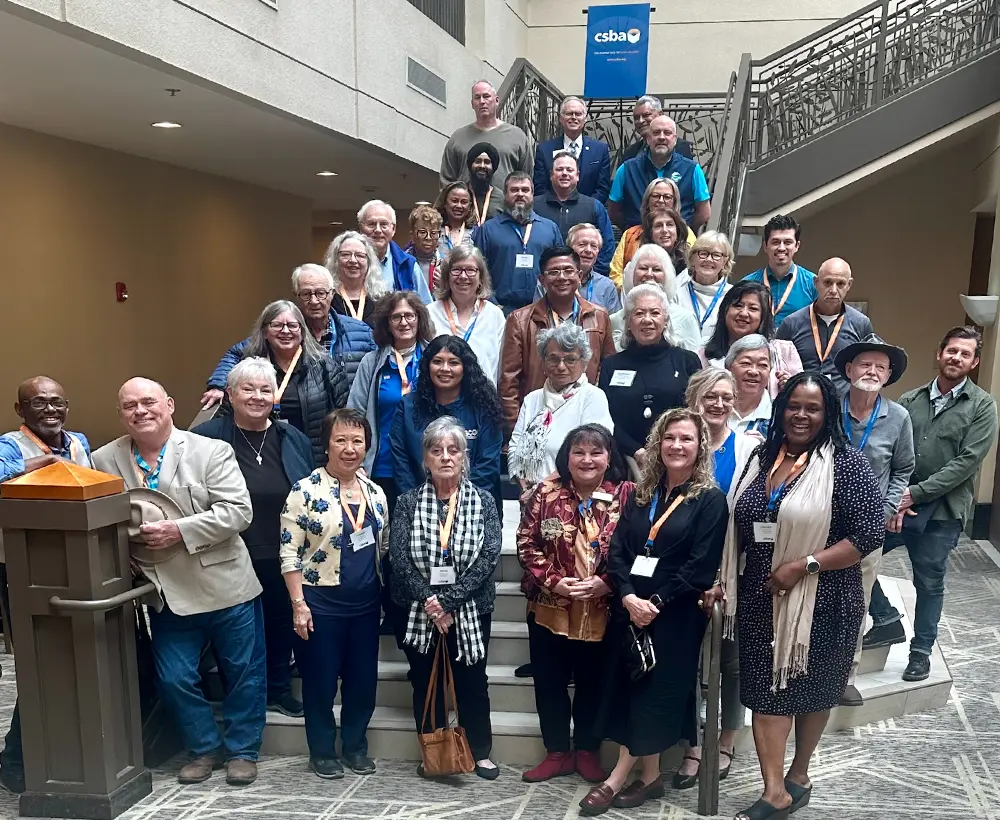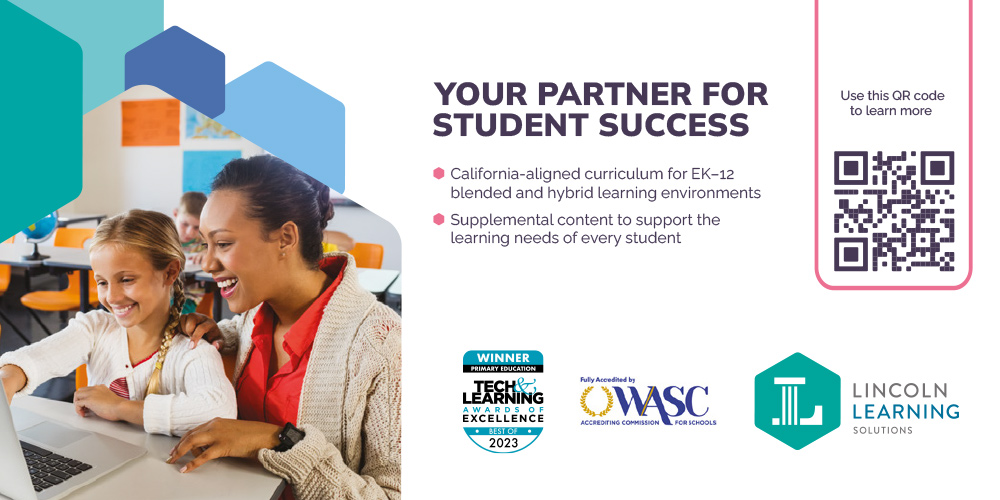“Legislative Action Week gives trustees a chance to spend dedicated time with their state legislators to advocate for a state budget that supports students and doesn’t place the state’s budget deficit on the backs of educators and students,” said CSBA CEO & Executive Director Vernon M. Billy. “The collective voice of school and county board members will be critical if schools are going to be protected from deep budget cuts.”
Resources



Council membership is appointed by the CSBA President who serves as the council chair. Members reflect the state’s diversity with special attention given to different types of LEAs representing geographic regions across the state. Members are appointed to serve a two-year term and meet at least three times a year.
At the council’s first meeting of 2024, topics included electric school buses, Elementary and Secondary School Emergency Relief (ESSER) updates and reporting requirements, and a legislative and budget update from guest speaker Edgar Cabral of the Legislative Analyst’s Office.

Troy Flint | tflint@csba.org
Editorial Director:
Kimberly Sellery | ksellery@csba.org
Staff Writers and Contributors:
Alisha Kirby | akirby@csba.org
Heather Kemp | hkemp@csba.org
Kristin Lindgren-Bruzzone | klindgren-bruzzone@csba.org
Meghan Russell | mrussell@csba.org
Director of Graphic Design & Branding:
Kerry Macklin | kmacklin@csba.org
Senior Graphic Designer:
Amanda Moen | amoen@csba.org
Albert Gonzalez | Santa Clara USD
President-elect:
Bettye Lusk | Monterey Peninsula USD
Vice President:
Debra Schade | Solana Beach SD
Immediate Past President:
Susan Markarian | Pacific Union ESD
CEO & Executive Director:
Vernon M. Billy
News and feature items submitted for publication are edited for style and space as necessary.

This was the third annual Coast2Coast trip and I’m proud to say I’ve attended every one. Coast2Coast offers a special opportunity to meet with members of California’s congressional delegation and I was fortunate to meet with both of our state’s senators, Alex Padilla and Laphonza Butler, in addition to my congressperson, Ro Khanna. I also treasure the opportunity to share experiences with colleagues from across California, receive policy briefings from ACSA and CSBA policy experts and learn from D.C. power players like Domestic Policy Advisor Neera Tanden and Deputy Secretary of Education Cindy Marten, to name just two of the luminaries who addressed our group.

County board members from across California came together in Sacramento on March 8-9 for the CSBA County Board Workshop. Among other responsibilities, county boards provide services to the state’s most vulnerable populations through juvenile court and county community schools, support county office initiatives, and make decisions regarding charter school authorizations and renewals — all governance duties requiring specific support to execute effectively.
The sessions — all designed by county board members — included a focus on the shared governance structure in county offices of education, mastering boardroom diplomacy, the ins and outs of expulsion appeals, charter school renewals, understanding the county budget and promising practices in juvenile court and community schools. Additionally, County Transitional Working Group members John McPherson of Monterey COE and Mike Walsh of Butte COE gave a presentation on why the decision was made to integrate the functions and services of the California County Boards of Education (CCBE) and incorporate county members fully into CSBA. The presentation also detailed how CSBA will expand county board member services, using the Transitional Working Group as a sounding board and idea factory to refine the most high-leverage strategies and to provide recommendations to CSBA’s Board of Directors.
CSBA, along with Napa Valley Unified School District and Vallejo City USD, have co-sponsored Senate Bill 1380 (Dodd, D-Napa) to address the deficiencies and fix a critical loophole that persisted after recent reforms to the Charter Schools Act in 2019.
A petition to establish a charter school in Napa Valley USD has once again emphasized a statutory loophole used to revive petitions denied by a school district authorizer or to bypass the district-authorizing process altogether. A petition substantially similar to one denied by Napa Valley USD was recently submitted for a second time to the Napa County Board of Education to establish a countywide charter school.

In the Golden State, ensuring students are in class is particularly important not only for optimal student outcomes but because local educational agencies receive funding based on average daily attendance.
The new brief “Seize the Data: Using Chronic Absence Data to Drive Student Engagement,” a joint publication of CSBA and Attendance Works released in March, provides an overview of chronic absenteeism in California and information on the student groups it impacts most. The brief also includes questions that board members can consider when assessing the issue, ways to address it and related resources.
Esteemed writer and activist James Baldwin was ostensibly addressing classroom educators in his 1963 essay, “A Talk to Teachers,” when he spoke of “those of you who deal with the minds and hearts of young people.” But, of course, his inspiring words resound with those involved in all sectors of public education.
School district and county office of education boards are charged with steering educational policies and decisions that profoundly impact students’ learning experiences. Among boards’ paramount responsibilities is the assurance of equity in curriculum decisions, ensuring that all students, regardless of background or circumstance, have access to high-quality learning opportunities that foster their academic success. Central to this mission is the board’s role in championing equitable representation and advancement in the curriculum.
The criteria used to evaluate potential officer candidates is as follows:
- Communicates effectively on behalf of public education and, as the face of CSBA, advocates CSBA’s vision, mission, policy platform and governance structure.
- Demonstrates advocacy for and knowledge of the diverse educational, economic, social and emotional needs of all students throughout the state through the lens of equity.
- Exemplifies strong leadership skills, ethics and integrity, including the ability to collaborate, motivate and inspire.

In the 2000s, a legislative trend of making it easier for plaintiffs of childhood sexual assault (CSA) claims to bring lawsuits against public entities emerged. For example, the claims presentation requirement for suing local public entities for money damages under the Government Tort Claims Act was removed by the Legislature for all claims from 2009 onward. Then in 2019, the Legislature passed Assembly Bill 218, which extends the statute of limitations for bringing these claims and provides a “lookback window” that allowed CSA claims that are alleged to have occurred at any time to be filed without satisfying the claims presentation requirement, if they were filed between January 2020 and December 2022.
While the claims allowed by laws in the legislative trend favoring CSA plaintiffs can typically be planned for (see the Legal article in the January newsletter), the claims made accessible under AB 218 create a series of issues for local educational agencies, especially as courts and juries begin to make decisions on these cases that are often decades old. In response, LEAs, with the help of CSBA’s Education Legal Alliance (ELA), are challenging AB 218’s constitutionality and pointing out the law’s major policy implications.

The latest data come from the National Center for Education Statistics’ (NCES) School Survey on Crime and Safety: 2021–22, a nationally representative survey of about 4,800 public K-12 schools. The study was conducted from Feb. 15 to July 19, 2022, as the American Academy of Pediatricians, the U.S. Surgeon General and other officials warned that rising rates of depression, anxiety and other new or exasperated mental health problems among child and adolescent had become a public health emergency.

The Institute of Education Science’s 2022 Report on Indicators of School Crime and Safety found that, “In recent years, reported incidents related to several crime and safety issues have become less prevalent at elementary and secondary schools when compared with a decade earlier. Protecting against the rare instances of school violence, however, requires a broad and holistic approach, with school boards playing a critical role in providing safe environments for students and staff.”
Recent legislation has impacted both Comprehensive School Safety Plans (CSSPs) and employee safety. This article is the second in a two-part series related to school safety and focuses on student safety and CSSPs. If you are interested in learning more about additional required safety plans, see last month’s article, “Employee Safety and Workplace Violence Prevention Plans.” (csba.pub/4akpSys)
During a jampacked meeting of the California State Board of Education (SBE) on March 6, the board reviewed the 2024 Accountability Workplan, approved a revised document providing guidance for reviewing and piloting instructional materials, and more.

The ability to speak more than one language is increasingly being celebrated and encouraged in education. California’s English Learner (EL) Roadmap Policy, State Seal of Biliteracy program and the launch of the federal Being Bilingual is a Superpower initiative are some recent examples of steps being taken to support high-quality language programs.

San Diego COE — one of the state’s three lead Homeless Education Technical Assistance Centers (HE TACs) — has made significant strides in meeting the needs of homeless youth and families in their community while providing helpful resources for other COEs.
“The more everybody knows about homeless education and what’s supposed to be done, the more kids are getting served the way they should be and supported and helped,” said Susanne Terry, the COE’s coordinator for homeless education. “There hasn’t always been a lot of funding to really support efforts to make sure everybody has the information that they need and has the capacity and the time to take advantage of that information.”
April 15
Student Board Member Training
April 16
Ethics Assembly Bill 2158
April 19-20
The Role of the School Board in Achieving Equity Through Strategic Budgeting
MIG Course 4: Human Resources/Collective Bargaining
The Role of the School Board in Achieving Equity Through Strategic Budgeting
June 12-13
MIG Course 5: Community Relations & Advocacy/Governance Integration
Small School District Financial Workshop | Fowler
Ethics Assembly Bill 2158 | West Sacramento
June 1
MIG Course 5: Community Relations & Advocacy/Governance Integration | Monterey








